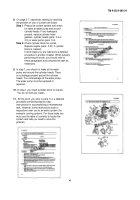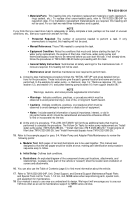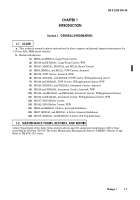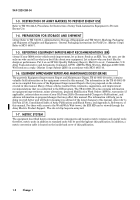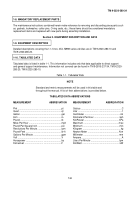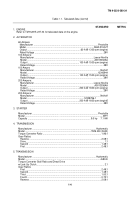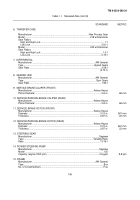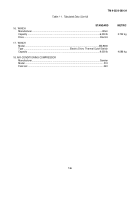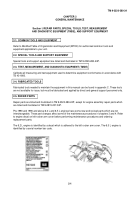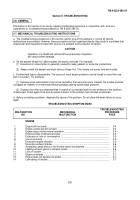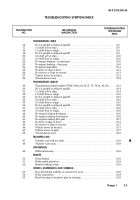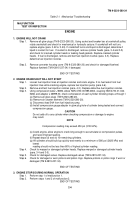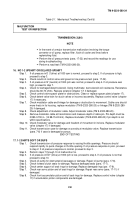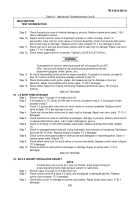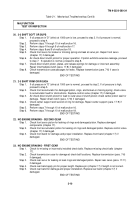TM-9-2320-280-34 - Page 26 of 1258
TM 9-2320-280-34
Section II. TROUBLESHOOTING
2-6. GENERAL
Information in this section is for use by support maintenance personnel in conjunction with, and as a
supplement to, troubleshooting procedures in TM 9-2320-280-20.
2-7. MECHANICAL TROUBLESHOOTING INSTRUCTIONS
a.
The troubleshooting procedures in this section cannot give all the answers or correct all vehicle
malfunctions encountered. However, these procedures are an organized step by step study of a problem that
directs tests and inspections toward the source of a problem and successful correction.
CAUTION
Operation of a deadlined vehicle without preliminary inspection
will cause further damage.
b.
Do the easiest things first. Most troubles are easily corrected. For example:
(1)
Excessive oil consumption is generally caused by leaky gaskets or loose line connections.
(2)
Always check the easiest and most obvious things first. This simple rule saves time and trouble.
c.
Doublecheck before disassembly. The source of most engine problems can be traced to more than one
part in a system. For example:
(1)
Excessive fuel consumption may not be caused by the fuel pump alone. Instead, the trouble could be
a clogged air cleaner, or a restricted exhaust passage causing severe back pressure.
(2)
Engines very often are disassembled in search of a complaint and the real evidence of the problem
is destroyed. Check again to be sure an easier solution to the problem has not been overlooked.
d.
Before correcting a problem, diagnose the cause of the problem. Do not allow the same failure to occur
again.
TROUBLESHOOTING SYMPTOM INDEX
TROUBLESHOOTING
MALFUNCTION
MECHANICAL
PROCEDURE
NO.
MALFUNCTION
PAGE
ENGINE
1.
Engine will not crank .
.............................................................................................
2-4
2.
Engine cranks but will not start .
..............................................................................
2-4
3
Engine stops during normal operation .
......................... ..........................................
2-4
4.
Engine knocks (mechanical noise) .
............................ ............................................
2-5
5.
Excessive oil loss or consumption .
.........................................................................
2-5
6.
Low oil pressure .
....................................................................................................
2-5
7.
Excessive engine vibration .
................................. ..................................................
2-5
8.
Excessive exhaust smoke .
.....................................................................................
2-6
9
Accelerator pedal sticks or full throttle cannot be obtained .
.......... ..........................
2-6
10.
Leaking exhaust gases or exhaust noises .
....................... ......................................
2-6
11.
Loss of coolant .
......................................................................................................
2-7
12.
Engine overheats .
..................................................................................................
2-7
13.
Engine does not develop full power .
.......................................................................
2-7
14
Lubricating oil diluted .
............................................................................................
2-7
2-2
Back to Top

